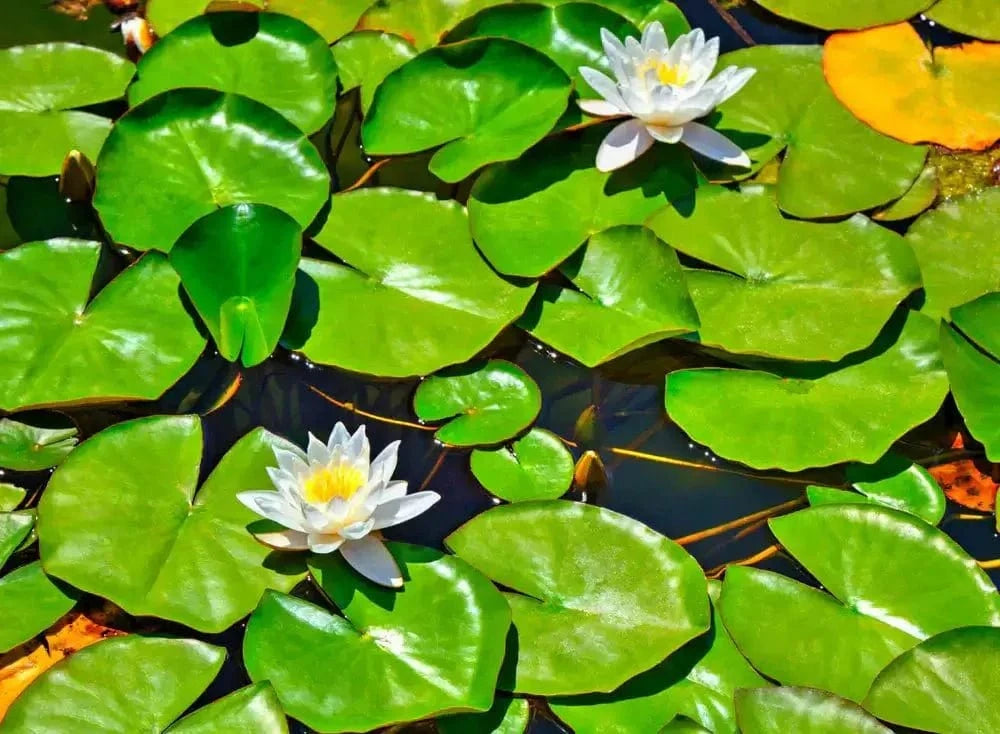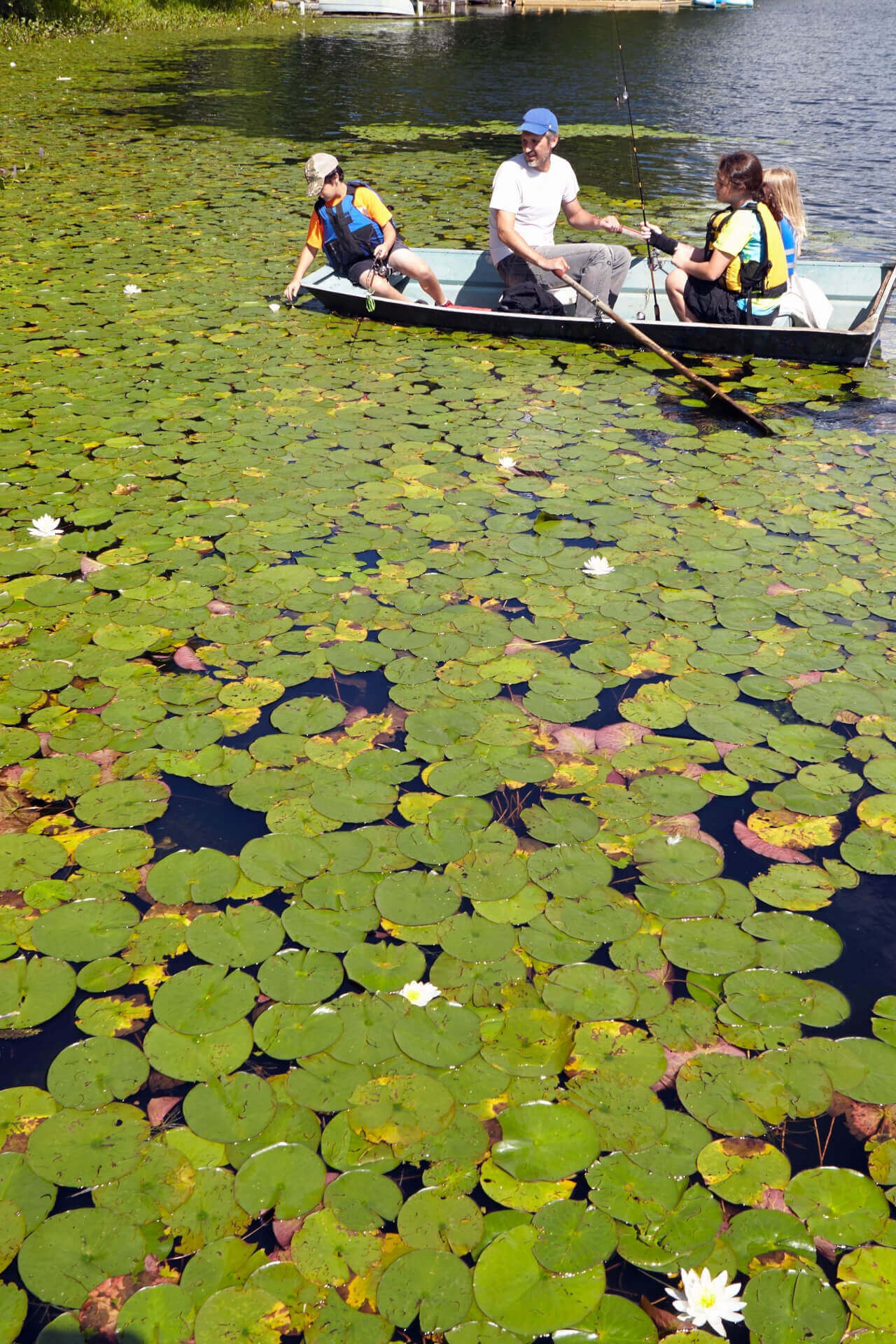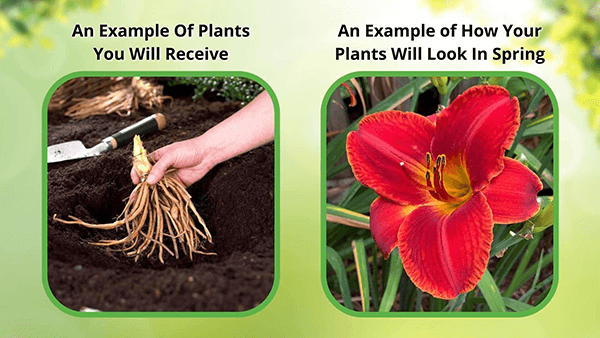Lily Pads
Lily Pads
| Order | Percentage Discount | ||
|---|---|---|---|
| 2-5 | 25% Off | ||
| 6-10 | 30% Off | ||
| 11-25 | 35% Off | ||
| 26-50 | 45% Off | ||
| 51+ | 65% Off | ||
Couldn't load pickup availability
5-7 Days
Under 12"
Full Sun
4-9
Flowering
Bare-root
OK.
Lily Pads - Nymphaea Odorata
Lily pads are aquatic plants in the family Nymphaeaceae. They are characterized by their large, flat leaves that float on the surface of still or slow-moving freshwater bodies. They are common in ponds, lakes, and slow streams and are essential to the ecosystem. This article will discuss this plant's biology, ecology, and significance.
Characteristics
They are perennial plants that grow from rhizomes anchored in the muddy bottom of aquatic environments. They have large, round, or heart-shaped leaves that can reach up to 18 inches in diameter. They have a waxy coating that repels water and protects them from damage. The plants also produce large, showy flowers that insects pollinate. They are adapted to living in nutrient-poor environments. They have specialized structures called aerenchyma that allow them to transport oxygen from the air to their roots, which helps them to survive in oxygen-depleted water.
Lily Pads Play An Essential Role In The Ecosystem
They play an essential role in the ecology of freshwater ecosystems. They provide cover and habitat for various aquatic organisms, including fish, amphibians, insects, and invertebrates. The plants also help regulate water temperature and reduce water flow, reducing erosion and sedimentation. They are also essential producers in the food chain, providing food for herbivores and omnivores. They also contribute to the nutrient cycle by absorbing excess nutrients from the water.
Plant Uses
They have significant cultural, aesthetic, and economic value. In many cultures, they symbolize purity, enlightenment, and rebirth. They are also popular ornamental plants in gardens and parks, and their large, showy flowers are prized for their beauty. Also, some cultures use them for medicinal and culinary purposes. Regarding economic value, lily pads are essential sources of food and income for local communities in some parts of the world, where they are harvested for their edible rhizomes and leaves.
Flowers
The flowers have four to six small yellow petals. Pond Lilies can grow in water up to 5 meters (16.4 feet) deep.
It belongs to the water lily family, Nymphaeaceae. Researchers have not yet determined the number of species, but the type species is N. lutea. It can be found throughout Canada and the United States.
If you are a pond owner and have beautiful fish, a floating plant with attached roots is a very positive feature of your pond. It is ultimately one of the most popular choices by fish pond owners.
Water is the best choice for aquatic plants because it has beautiful flowers. The plant can be put in a pot and positioned in a specific location in the pond.
They will decorate the pond's surface and make it a beautiful site with wonderful leaves and flowers that will provide a unique, lovely touch.
Conclusion: This beautiful aquatic perennial requires full sun and can reach heights of up to six feet and a width of 12 inches across. This exotic plant blooms from spring to fall, adding beauty to your water garden.
Its petals are enchanting, blooming only in the daytime. It requires heavy soil and may also be grown in containers.
This Is How Your Plants Will Look upon Delivery
Bloom/Foliage Color
White
Shipping date depends on the date displayed and chosen when you order from the product's page.
We only accept returns on plants verified dead. If you think your plants have died, we offer a 1 year warranty, please use use this File a Claim Link to verify dead plants and start with return warranty process.



Wàiting foŕ ŵàrmer wèaþher






